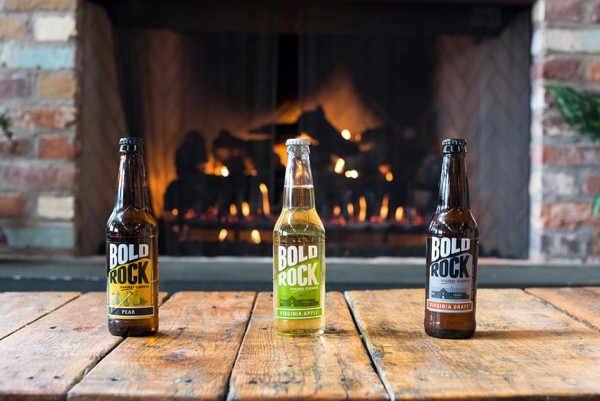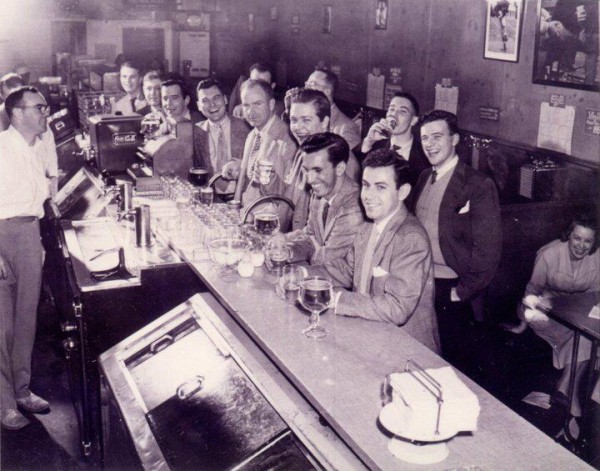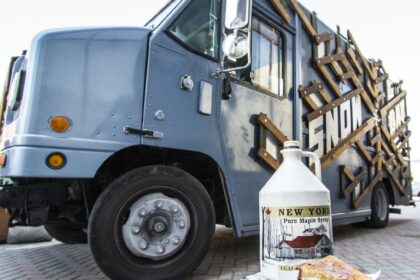For the rumored birthplace of macaroni and cheese, Charlottesville, Virginia might have been flying under the epicurean radar for a couple decades. Recently, however, there has been an explosion of vineyards, breweries and worthwhile restaurants.
Charlottesville’s culinary roots reach back to Thomas Jefferson at Monticello, whom some claim is America’s first foodie. As an enthusiastic traveler, Jefferson loved to bring back recipes he tasted abroad and even tended his own vines. Upon further investigation, Jefferson was probably not the father of macaroni and cheese, but he did import a “mould for making macaroni” from Naples, Italy and popularize the dish at Monticello dinners (and we certainly thank him for that!)
Fortunately, Charlottesville’s love of good food did not die with Jefferson, and is a worthy Virginia attraction. With this behind-the-scenes guide to Charlottesville’s culinary scene, you will be able to hit spots that may be easy to miss, with interesting facts about each enticing you further.

1) Off-The-Beaten Path: Bold Rock Ciderworks
As part of the “Brew Ridge Trail”, people may know Bold Rock Ciderworks exists, but be hesitant to drive 45 minutes outside of central Charlottesville to rural Nellysville to visit. As soon as you step into the homey Shenandoah-style barn-inspired tasting and production room, you will know the journey was worth it. A fire flickers in the massive central fireplace, while down-to-earth bartenders pour on a chestnut-colored bar. The building feels alive, as the thump of the bottling machine provides a calm, steady heartbeat indicating that life happens at a different rhythm here. I barely had time to independently absorb these surroundings before John, one of the co-owners, came down to greet me with enthusiasm and energy equivalent to someone a third his age. Seeing my wide eyes, he jumped into an explanation of what I was seeing, speaking about each structural element as if it was an old friend.
“The bar is made from old fencing around this farm that I moved to thirty years ago. The mantelpiece and tap handles were originally made from a cherry tree we had on the farm. Over here, you’ll see our old hay feeder hanging, next to the fireplace made from homemade bricks from a house down the road that collapsed.”
As we continued to chat, I became mesmerized by John’s slight southern drawl painting an amazing picture of how the building integrated with this land and its history. It turns out John knew a lot more about rural beautification than cider when he began this venture. Trained as a child psychologist, he proudly points out that he had “exactly 0.0% experience with brewing beer and making cider. That’s where Brain comes in”.

John noticed the burgeoning craft brewing scene, and wanted to add his own iconic beverage to the menu, in a venue providing a beautiful Blue Ridge Mountains location. Thus, the idea to produce craft cider was born — perfect due to the bounty of apples growing nearby. And after meeting the world-renowned Brian Shanks, who won awards for his cider across New Zealand and served as an acclaimed international consultant for cider companies around the world, like Strongbow and Woodchuck — Bold Rock sold its first bottle of cider in June 2012. In just three years, Bold Rock is one of the top 5-6 producers in the country.
Despite this success, John exudes humility and the “Chapel of Apple” exudes a home-grown feel. John’s wife personally designs all the labels, and even developed a miniature museum exhibition upstairs. John points one picture, “Back in the 14th century, kids were baptized in cider since the alcohol ensures it is germ-free. I’ve got my first grandchild on the way and I can’t wait to dip her in a big bucket of Bold Rock”, he says with a twinkle in his eye and a mischievous grin.
We move over to the large window that allows visitors to watch the fermentation and bottling process. The cider is produced from 15 varieties of apples from ten local orchards, which are crushed every week of the year. He points out the bottler, which is the largest in the mid-Atlantic and a custom-made carbonation machine designed to release aroma and a mouth feel to preserve the taste of apples at the peak of freshness.
Secret Fact: See if you find the piece of wood affectionately known as the “big ass beam”. At 6,000 pounds and 128 years old, it is the biggest beam in Virginia and was given as a gift to the facility in exchange for a lifetime of free cider.

2) Hidden Gem: Sultan Kebab
Usually the last place I look for good restaurants is in strip malls on the side of the busy highway, but after hearing repeated rave reviews about “a place that tastes like Turkey” I decided to give it a chance. Upon entering, I was immediately transported to a more spacious version of a Turkish home, with walls adorned with marbled glass, tea accessories and Turkish carpets. When I received a warm greeting from the owners Deniz and Serhat, who exuded hospitality that you can only get in Turkey, I really felt like I was overseas.
Serat rushed to heat up some tea and Deniz starts to tell their story, which was a slightly unconventional tale of two friends who founded Sultan Kebab to remedy the lack of Turkish food in the area. Both moved to Charlottesville from Turkey and missed their favorite dishes so much they collected recipes from their families and tried them out at dinner parties with friends. When a Persian restaurant went out of business — which was the closest cuisine that they could find — they decided to “just jump” and start their own.

Neither had official experience preparing food but Serat explains, “In Turkey, you don’t need to be a cook or a chef. Everyone has an idea about the food. You have to do what you love.” Serhat came from Adana which is known for its spicy food, meat, veggies and of course, the famous Adana Kebab. He joked that meat and grilling took such a central position in his culture growing up that it is a well-known adage that, “if there’s a fire in the house, the first thing you have to save is the grill.” Under the guidance of his father, a passionate cook, Serat perfected his own cooking aptitude, applying his past experience as a bartender to mixing spices for marinating meats.
Deniz is from tropical Izmir in Turkey, famous for its herbs, fresh vegetables and seafood. His mother was the cook of his family and happily passed along the family recipes, perfecting his ability to make rice pudding when she visited Charlottesville.
Vegans and vegetarians, don’t let the name deceive you, as there are plenty of options for herbivores too including a sampler plate of appetizers. One of their signature dishes is a innovative take on hummus casserole, inspired by something they tried at a friend’s restaurant in Turkey. Picture chickpeas blended with tahini, olive oil, lemon juice and garlic with kashar cheese, served with pita bread. Yum!
One of the owners’ favorite parts of running the restaurant is sharing all their childhood favorites, like sour cherry, peach juice and Aryan yogurt drink. They directly important ingredients from a Turkish distributor and buy extra for guests to take some home, also supplying special teapots, Turkish coffee makers, pomegranate molasses, spices and Biskrem hazelnut cookies.
Secret Fact: Both owners have a background in tourism so they will happily provide travel tips and advice if their delicious food inspires you to visit to the place where it originated!

3) Hole-In-The-Wall: The Virginian
If you do not know where to look, Charlottesville’s oldest restaurant may also be one of the most difficult to find. Since 1923, this “Charlottesville Tradition” has humbly hidden away on “the Corner” across from the University of Virginia’s campus — so a visitor from out of town might walk right by it. Despite its small size, it contains a rich history, transformed to a soda fountain during prohibition to temporarily “going under” during WWII, with the downstairs “West Virginian” live music venue and tiny “barbershop” closet eventually being turned into storage.
Manager Myles Keis describes the Virginian as a hallway containing only 14 tables with tall wooden booths. While it may not be spacious, the place exudes a social atmosphere and has served as a staple in the community, attracting regulars, hospital employees and students. Usually when past students come back to town, they are eager to revisit their old watering hole to eat good food and reminiscence about the good ole days. The manager recalls meeting several customers who met at this bar, got married and come back to remember all the good memories since the first meeting back in the 1960s.
The restaurant specializes in Southern-inspired American bar food, honoring traditional dishes but willing to change with new trends. Make sure to try their signature dish: stumble dOwn maC n’ Cheese, in honor of Thomas Jefferson — homemade pepper jack mac n’ cheese topped with a crispy, cheddar potato cake. Choose from an extensive list of Virginia beers and wines to wash down your meal.
Secret Fact: Look for a plaque on one of the barstools which honors the favorite seat of Fred T. Dove, Charlottesville’s “unofficial Mayor of the Corner.” Recently, his daughter brought Fred’s grandkids to see it, providing another example of how this restaurant becomes a significant part of people’s personal histories.

4) Rockstar Roots: Blenheim Vineyards
Charlottesville’s rolling hills, beautiful farmland and mild weather make it easy to imagine settling down here, but I never expected to find so many star-studded connections.
Dave Matthews chose Charlottesville as a quiet place for his mother to retire and bought her a house in the rolling farmland outside the city. She wanted to do something practical with the land, and turned it into a vineyard in 2001, slightly before the Virginia wine movement became so popular. This vineyard, which is actually just down the road from one owned by Donald Trump, opened to the public in 2009. Despite having “Dave and Donald” on the same road, Blenheim Vineyards approaches wine making quite differently.
First, the winemaker is a young, approachable female in flannel named Kirsty. She explains how she left a career in science to experiment with winemaking, and still embraces a “no rules, no precedent” approach to developing interesting wines. She makes thirteen wines from Virginia grapes, half of which are grown on the property. All bottles are secured by a screwcap which embodies her “live in the moment”, unpretentious attitude toward enjoying life and good wine. She aims to impress loyal wine-lovers to first-time wine drinkers, who visit the vineyard mostly because of their love for the band.
Speaking of the band, Dave Matthews encourages Kirsty to “make good wine” but leaves the details up to her. Kirsty explains, “I don’t tell him how to sing and he doesn’t tell me how to make wine.” His most direct involvement includes drawing labels for Painted White and Painted Red blends, which change every year.
Secret Fact: Dave Matthews also sketched the design for the tasting room and the building. If you ask the bartenders, you can see the informal, pencil sketch of the structure which is typically kept behind the bar.
Katie Foote
Latest posts by Katie Foote (see all)
- 8 Outstanding Conservation Safaris Around The World - Apr 12, 2022
- These 10 Women Whiskey Distillers Will Make You Crave A Manhattan - Dec 12, 2018
- Ethical Travel: Should You Visit Thailand’s Long Neck Women Villages? - Dec 9, 2018
- 8 Pioneering Vegetarian Vacations Around The World - Aug 13, 2018
- A New Perspective: Can Travel Help Reverse Alzheimer’s? - Aug 5, 2018



